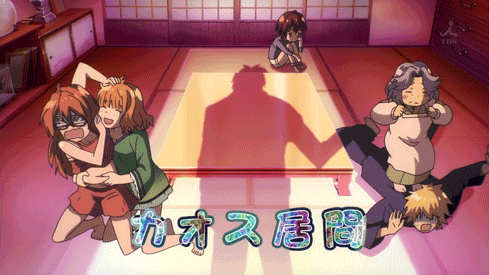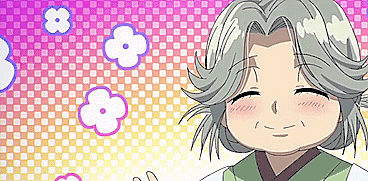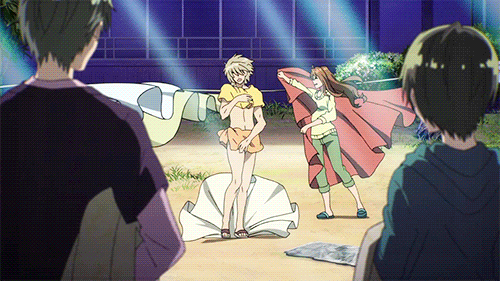 Zenko here! (For those who don’t know, I’m Akko’s other half.) Besides helping Akko out with the anime reviews, I’m starting to write reviews of my own, focusing primarily on comparisons of anime and manga versions of a story. My writing style is vastly different from Akko’s, so if you usually visit his blog for his succinct and analytical critiques, be warned that you will not find it here.
Zenko here! (For those who don’t know, I’m Akko’s other half.) Besides helping Akko out with the anime reviews, I’m starting to write reviews of my own, focusing primarily on comparisons of anime and manga versions of a story. My writing style is vastly different from Akko’s, so if you usually visit his blog for his succinct and analytical critiques, be warned that you will not find it here.
As often seems to be the case recently for me, I had seen the anime a few years ago, watched it again recently, then took up the manga and read through all 85 chapters of what Crunchyroll Manga has to offer of “Bokura wa Minna Kawaisou.” Like its English title of “The Kawai Complex Guide To Manors And Hostel Behavior,” the Japanese title bears a pun, at the same time meaning “we’re all from/of Kawai Manor” and “we’re all pitiful.”
Misfit Freaks and Awful People
What happens when a masochist, a drunk, a man-eater, a bookworm, and a freak-magnet live together under the same roof? Well, apparently a lot of insane antics and a few sweet ones. Today’s comparison covers the odd story of a boarding house’s weird, lewd, trouble-making tenants and the house’s pleasant yet mischievous manager. Our newcomer protagonist finds himself once again the freak-magnet as he becomes essentially the bullied youngest sibling in a family of bad personalities. His only bright spot in the house is his cute, book-loving sempai—who’s also taciturn, cold, and absent minded. His earnest pursuit of her is fraught with crushing failures, many of which are deliberately caused by bitter (or bored) members of the household who take delight in ruining the innocence of youthful romance. And yet…well, I’d love to say, “and yet, they are still a family,” but quite frankly, it’s slow to come to the surface. It’s in there, hidden somewhere among the bondage rope, saké bottles, makeup, and piles of books. Somewhere there are giant bubbles, water fights, a few rescues, and when you’ve had a bad day, your favorite meal is waiting for you at dinner.

Art Style and Character Portrayal
In initial comparisons, the anime fairly accurately portrays the chapters it covers in the manga, so there isn’t really anything concrete that it differs in. Ah, but it does differ—in feel. Here is one where I will actually talk about the difference in character design and drawing style. While many anime adjust the drawing style to be a little better proportioned and slicker, this is an interesting example of their simplifying the character designs. Personally, I thought this choice robbed the characters and their facial expressions of a certain charm. The girls had a particular beauty and cuteness to them in the manga (when they aren’t being horrible to each other) that the anime completely skipped out on. The basics were there, but not the eye-catching moments of delicate appeal and graceful lines. This is particularly marked in Mayumi, the drunk OL (office lady) who has horrible luck with men. In the anime when she gets dressed up, she looks like she’s trying too hard. In the manga, she really is beautifully charming, and it emphasizes her innocent longing deep down for a man that won’t be a jerk and fraud.

The facial expressions, too, were quite striking in the manga. I would sometimes stop reading just to look at them and enjoy the great portrayal of a particular emotion or a complex mix of ones. The original manga artist really has a talent for faces, and it really added to my enjoyment of reading the manga. It added a certain extra element that made the characters more intriguing than I found them to be in the anime, which did not take advantage of these facial expressions. Consequently, the anime’s more straight-forward approach to the characters’ portrayals left them as somewhat flat—awful people with a few endearing moments. Having watched the anime twice before reading the manga, I still did not grow attached to the characters—rather, they were somewhat entertaining to watch, but still with the distance of “I wouldn’t actually like to know these people.” The manga, however, gave glimpses of deeper character that really does slowly unfold as the manga progresses past the point in the story where the anime leaves off. While most of them are still a freaks that the average person would stay clear of, the manga does portray them in a way that there is something about those freaks that makes one want to know more.
The Adults of Kawaisou
Something essential to the story that goes across both the anime and manga is the fact that, with the exception of the house manager Sumiko, the adults of the house are terrible or useless people in some way or another, while the two high school students are relatively normal, decent people. Sumiko and Shiro (the masochist) are the only ones perhaps to provide any real sort of advice or wisdom (though Shiro’s is often then hard accept gratefully as he usually can’t help but finish it with something reminding you abruptly of his more off-putting tendencies). Other than this, there are no good adult role-models. The adults in this tale are children. I will say, though, that the anime finishes up before the story starts to go into this aspect with an interesting look at the hopes, dreams, accomplishments, and unwanted pasts of the three child-adult tenants.
As you may have noticed, Sumiko is an exception to the child-adults. The manager of Kawaisou is my hero. I want to be her when I reach her age! (In fact, in look alone I wouldn’t be too far off….) Though a woman of advancing middle-age, she is youthful in soul, fun, sweet, mischievous, but with the best heart for everyone in the house. At the same time, though, she knows how to keep them in line. Sayaka, the man-eater college student who’s apparently horrifying without her makeup, bears a respectful fear of Sumiko and will not cross the line when Sumiko warns her. Sumiko is the one who prepares your favorite dinner when you’ve had a bad day, she’s the one who will listen to your confusions and frustrations, and she’s the one who will appreciate you more than anyone. If anyone makes this pack of freaks feel like a family, it is Sumiko. (Though, I will add that Shiro the masochist does create many fun activities for the whole group that does bring them together and brings them joy.)

In Conclusion
So, what do I recommend? Quite frankly, if you liked the anime at all, I recommend the manga—and do start from the beginning! The impression it gives is a little different, and this grows as intriguing moments and subtle hints to the inner-workings of characters develop and begin to reveal depth. By chapter 85, it has gone some interesting places as characters learn more about themselves and each other as they clash and even grow closer.
And if you started with the manga? Don’t even bother with the anime. I honestly cannot think of anything that the anime does better or in a positively different way. By comparison, it is a dull representation of the story. Stick with the manga, and let’s look forward to what will continue to unfold in this odd tale of misfit freaks and awful people who clamor and fight their way through life together as housemates.



Awesome write up about this series. It’s been one I’d been wanting to watch for a long while, though knew next to nothing about it. Thanks for sharing your thoughts XD
LikeLiked by 1 person
Glad you enjoyed it!
LikeLike
[…] Bokura wa Minna Kawaisou (anime & manga comparison) By Akko Anime […]
LikeLike